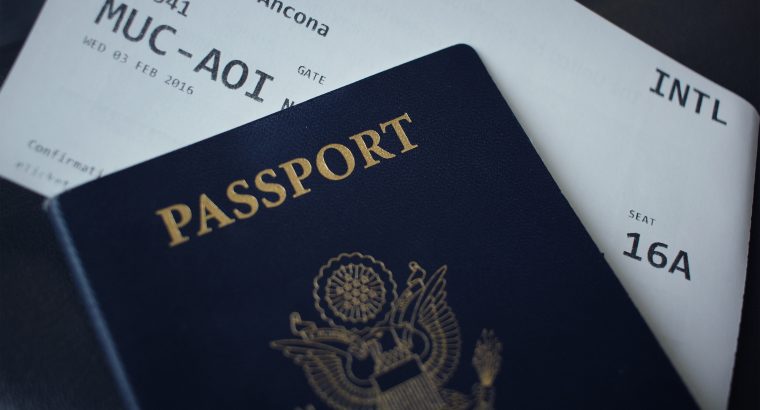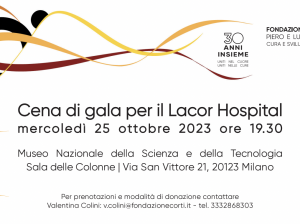Eu Opens Borders But Not For US Visitors
(July 2, 2020) The European Union Member States have approved a draft list of 54 countries (see below), considered for Safe Entrance regarding measures taken during the Coronavirus crisis. The “safe list” will be used as a guide for member countries for opening their borders after the Covid-19 travel restrictions are lifted July 1.
The United States is not on this list. The U.S. Embassy in Rome published in their newsletter, “As of July 1, the European Union (known as the EU, which includes Italy) began lifting the restrictions on non-essential travel into the EU for residents of certain third countries. This does not include United States residents.”
As of July 1, 2020, citizens from the listed countries will be permitted to enter European Member States.
Although this is a European Union policy it is not legally binding. Member States are permitted to set their own rules, even if it means excluding countries on the list from entering their borders.
Before any trip abroad, it is advisable to check which rules are established in the country of destination and in any countries you will be passing through in transit or travel.
There are 14 countries which have been confirmed for the safe list, while the others are still pending. They are Algeria, Australia, Canada, Georgia, Japan, Montenegro, Morocco, New Zealand, Rwanda, Serbia, South Korea, Thailand, Tunisia and Uruguay.
According to the European Council, citizens from independent principalities and Schengen area countries; Andorra, Monaco, San Marino, Vatican Iceland, Lichtenstein, Norway and Switzerland should be considered as EU residents and be allowed to travel within the EU.
For now, the United Kingdom is exempt from travel restrictions and will be treated in the same way as European Union nationals until the end of the Brexit transition period, on December 31, 2020.
The safe list will be revised every two weeks and is based on data from testing, surveillance, contact tracing, containment, treatment and reporting of the Coronavirus in each country. Transparency and true communication are crucial in stopping the COVID-19 virus, however, some critics claim that not all information is reliable or accurate.
The “safe list” can be reviewed on https://reopen.europa.eu/en.
Travel to Italy
What does the Italian Minister of Foreign Affairs say?
As of 1 July the possibilities of moving to and from abroad are further expanded. These are the main points:
Travel to and from Member States of the European Union continues to be freely allowed (in addition to Italy, EU Member States are: Austria, Belgium, Bulgaria, Cyprus, Croatia, Denmark, Estonia, Finland, France, Germany, Greece , Ireland, Latvia, Lithuania, Luxembourg, Malta, the Netherlands, Poland, Portugal, the Czech Republic, Romania, Slovakia, Slovenia, Spain, Sweden and Hungary), States Parties to the Schengen Agreement (non-EU States party to the Agreement of Schengen are: Iceland, Liechtenstein, Norway, Switzerland), United Kingdom of Great Britain and Northern Ireland Andorra, Principality of Monaco, Republic of San Marino and Vatican City State. Those who enter these countries no longer have to justify the reasons for the tripis not subject to the obligation of fiduciary isolation for 14 days upon entering Italy.
As of July 1st, travel to Italy of residents of the following countries is also freely allowed: Algeria, Australia, Canada, Georgia, Japan, Montenegro, Morocco, New Zealand, Rwanda, Serbia, Republic of Korea, Thailand, Tunisia, Uruguay . In these cases it is no longer necessary to justify the reasons for the trip.
EU citizens, foreigners residing in an EU country and their family members (spouses, civilly united, de facto cohabiting partner, dependent children under the age of 21, dependent ascendants) can freely enter Italian territory, without the need for justify the reasons for the trip.
Transfers other than those indicated above may be carried out – as well as for work, health, absolute necessity, return to home, residence or home – also for study reasons. Travel for anything other than those indicated above not motivated by one of these reasons remain prohibited.
For entries into Italy from countries other than European Union countries, countries party to the Schengen Agreement, the United Kingdom of Great Britain and Northern Ireland, Andorra, the Principality of Monaco, the Republic of San Marino or the Vatican City State, the obligation of fiduciary isolation remains, with some exceptions.
Those entering or returning from a European Union state or a State party to the Schengen Agreement, the United Kingdom of Great Britain and Northern Ireland, Andorra, the Principality of Monaco, the Republic of San Marino or Vatican City State must not undergo fiduciary isolation, provided he has not stayed in a country other than these in the 14 days prior to entry into Italy.
Fiduciary isolation (self-quarantine) at home for 14 days remains mandatory for those who entered Italy:
- from a country other than the following: European Union countries, countries party to the Schengen agreement, United Kingdom of Great Britain and Northern Ireland, Andorra, Monaco, the Republic of San Marino or the Vatican City State;
- from any foreign country (except San Marino and the Vatican), if you stayed in the 14 days prior to entering Italy in a country or territory other than the following: European Union countries, countries party to the Schengen agreement, United Kingdom of Great Britain and Northern Ireland, Andorra, Monaco, Republic of San Marino or Vatican City State.
The fiduciary isolation obligation does not apply to:
- transportation crew;
- traveling staff;
- who enters for proven work reasons, if he is a citizen or resident in one of the following countries: Italy, Austria, Belgium, Bulgaria, Cyprus, Croatia, Denmark, Estonia, Finland, France, Germany, Greece, Ireland, Latvia, Lithuania, Luxembourg , Malta, Netherlands, Poland, Portugal, Czech Republic, Romania, Slovakia, Slovenia, Spain, Sweden and Hungary, Iceland, Liechtenstein, Norway, Switzerland, Andorra, Principality of Monaco, Republic of San Marino, Vatican City State, United Kingdom of Great Britain and Northern Ireland);
- health personnel who enter Italy for the exercise of health professions;
- incoming and outgoing cross-border workers to go to work and to return home;
- staff from companies with main or secondary headquarters in Italy who return to Italy after traveling abroad for work lasting no more than 120 hours (5 days);
- movements to and from the Republic of San Marino and the Vatican City State;
- officials and agents of the European Union, of international organizations, staff of diplomatic missions and consulates, military personnel in the exercise of their duties;
- pupils and students attending a course of study in a State other than that in which they live and return home at least once a week;
- short stay in Italy (up to 120 total hours) for work, health or absolute urgency reasons;
- airport transit;
- transit lasting no more than 36 total hours to reach your country of residence (for example, entering Italy with a ferry from Greece to continue by car to your home in Germany).
Read the full report from the source: Minister of Foreign Affairs Italy website.
SAFE LIST (draft by the European Council)
- Albania
- Algeria
- Andorra
- Angola
- Australia
- Bahamas
- Bhutan
- Bosnia and Herzegovina
- Canada
- China
- Costa Rica
- Cuba
- Democratic People’s Republic of Korea
- Dominica
- Egypt
- Ethiopia
- Georgia
- Guyana
- India
- Indonesia
- Jamaica
- Japan
- Kazakhstan
- Kosovo
- Lebanon
- Mauritius
- Monaco
- Mongolia
- Montenegro
- Morocco
- Mozambique
- Myanmar
- Namibia
- New Zealand
- Nicaragua
- Palau
- Paraguay
- Rwanda
- Saint Lucia
- Serbia
- South Korea
- Tajikistan
- Thailand
- Tunisia
- Turkey
- Turkmenistan
- Uganda
- Ukraine
- Uruguay
- Uzbekistan
- Vatican City
- Venezuela
- Vietnam
- Zambia
Review the “safe list” updates on https://reopen.europa.eu/en.
Featured image Nicole Geri / Unsplash
Article originally published on Milanostyle.com
Comments (1)
You must be logged in to post a comment.





[…] Eu Opens Borders But Not For US Visitors […]